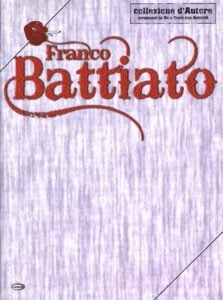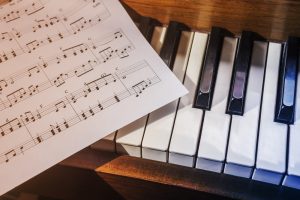Table of Contents
Come join us now, and enjoy playing your beloved music and browse through great scores of every level and styles!
Can’t find the songbook you’re looking for? Please, email us at: sheetmusiclibrarypdf@gmail.com We’d like to help you!
Franco Battiato La Cura piano vocal chords sheet music, Noten, partitura, spartiti, partition, 楽譜

Please, subscribe to our Library.
If you are already a subscriber, please, check our NEW SCORES’ page every month for new sheet music. THANK YOU!
Browse in the Library:
Or browse in the categories menus & download the Library Catalog PDF:
Who was Franco Battiato ?
Franco Battiato: The Visionary Maestro of Italian Music
Franco Battiato (1945–2021) was one of Italy’s most innovative and eclectic musicians, blending avant-garde experimentation, progressive rock, electronic music, pop, and world music into a unique and deeply philosophical body of work. Over his five-decade career, he evolved from an experimental underground artist to a mainstream icon while maintaining his intellectual depth and artistic integrity.
This article explores Battiato’s biography, musical style, harmonic and melodic techniques, influences, legacy, key works, filmography, discography, and documentaries, along with links to his most famous compositions.
Biography
Early Life (1945–1960s)
Franco Battiato was born on March 23, 1945, in Ionia (now Riposto), Sicily. From an early age, he showed a strong interest in music, studying piano and violin. In the mid-1960s, he moved to Milan, where he began performing in clubs and collaborating with other musicians.
Experimental and Progressive Rock Phase (1970s)
Battiato’s early career was marked by radical experimentation. His first albums—Fetus (1971), Pollution (1972), and Sulle Corde di Aries (1973)—combined Krautrock, electronic minimalism, and progressive rock, earning him a cult following.
In 1975, he released “M’Emmiro”, featuring hypnotic repetitions and philosophical lyrics. His 1978 album “L’Egitto prima delle sabbie” (“Egypt Before the Sands”) was a turning point, merging Middle Eastern scales with electronic textures.
Pop Success and Mainstream Breakthrough (1980s–1990s)
Battiato shifted toward art-pop in the 1980s, achieving commercial success with:
- “La Voce del Padrone” (1981) – Italy’s first million-selling LP, featuring hits like “Bandiera Bianca” and “Centro di Gravità Permanente”.
- “L’Arca di Noè” (1982) – A blend of pop melodies and esoteric themes.
His lyrics, often written with philosopher Manlio Sgalambro, explored metaphysics, spirituality, and existentialism.
Later Career and Final Years (2000s–2021)
Battiato continued releasing albums, including “Fleurs” (1999), “Dieci Stratagemmi” (2004), and “Apriti Sesamo” (2012). He also ventured into filmmaking and painting.
He passed away on May 18, 2021, leaving behind a legacy as one of Italy’s most profound musical visionaries.
Musical Style and Innovations
Genre Fusion
Battiato’s work defies categorization, blending:
- Electronic music (early synthesizers, sequencers)
- Progressive rock (complex structures, concept albums)
- World music (Arabic, Indian, and African influences)
- Classical (Baroque, Romantic, and minimalist elements)
- Pop (catchy melodies with deep lyrics)
Harmonic and Melodic Techniques
- Modal Interchange: Frequent shifts between Aeolian, Phrygian, and Lydian modes, giving his music an exotic feel (e.g., “L’Oceano di Silenzio”).
- Minimalist Repetition: Inspired by Steve Reich and Terry Riley, he used looping motifs (“Sequenze e Frequenze”).
- Dissonance and Resolution: Unconventional chord progressions with sudden resolutions (“Prospettiva Nevski”).
- Eastern Influences: Use of quarter tones and microtonal melodies (“Nomadi”).
Lyrical Themes
Battiato’s lyrics, often co-written with Manlio Sgalambro, explored:
- Philosophy (Schopenhauer, Nietzsche)
- Mysticism (Sufism, Buddhism)
- Science and Cosmology (quantum physics, astronomy)
- Social Critique (consumerism, modernity)
Influences
Battiato drew inspiration from a wide range of artists and thinkers:
- Musical:
- Kraftwerk (electronic experimentation)
- Pink Floyd (progressive rock)
- Erik Satie (minimalist piano)
- Arabic and Indian classical music
- Philosophical/Literary:
- Friedrich Nietzsche
- Jiddu Krishnamurti
- Hermann Hesse
Legacy and Impact
Battiato influenced generations of musicians, from Italian pop stars like Giorgia and Carmen Consoli to experimental acts like Boards of Canada. His fusion of high art and pop paved the way for artists like Björk and Radiohead.
Key Contributions to Music
- Bridging Avant-Garde and Pop – Made experimental music accessible.
- Introducing Electronic Music to Italy – Pioneered synth use in Italian pop.
- Philosophical Depth in Lyrics – Elevated pop music to an intellectual art form.
Essential Works
Albums
- “Fetus” (1971) – Experimental electronic rock.
- “L’Egitto prima delle sabbie” (1978) – Middle Eastern influences.
- “La Voce del Padrone” (1981) – Breakthrough pop masterpiece.
- “Fleurs” (1999) – Baroque-inspired art-pop.
- “Dieci Stratagemmi” (2004) – Philosophical and orchestral.
Iconic Songs
- Centro di Gravità Permanente (1981)
- Bandiera Bianca (1981)
- La Cura (1996) – A poetic ode to love and protection.
- Voglio Vederti Danzare (1982)
Filmography
Battiato directed several films, often surreal and philosophical:
- “Perduto amor” (2003) – Won the Silver Ribbon for Best New Director.
- “Musikanten” (2005) – A tribute to Beethoven.
- “Niente è come sembra” (2007) – A meditation on illusion.
Discography (Selected)
- 1970s: Fetus, Pollution, Sulle Corde di Aries
- 1980s: La Voce del Padrone, L’Arca di Noè, Mondi Lontanissimi
- 1990s: Caffè de la Paix, Fleurs
- 2000s: Dieci Stratagemmi, Apriti Sesamo
Documentaries and Further Watching
Franco Battiato was a musical alchemist, merging sound, philosophy, and spirituality into a singular artistic vision. His work remains a touchstone for those seeking depth in pop, experimentation in tradition, and wisdom in art.
About the song La Cura, Franco Battiato’s masterpiece
“La Cura” (1996) is one of Franco Battiato’s most beloved and iconic songs. A poetic meditation on love, protection, and existential devotion, it stands as a pinnacle of his ability to merge philosophical depth with accessible pop melodies. This analysis explores its lyrics, musical structure, cultural impact, and legacy.
Background and Release
- Album: L’Imboscata (1996)
- Genre: Art pop / Symphonic pop
- Lyrics: Written by Battiato and his longtime collaborator Manlio Sgalambro
- Theme: A vow of unconditional love and healing, framed in almost mystical terms
The song became a major hit in Italy and remains a staple of Italian music culture, often played at weddings and emotional tributes.
Lyrics: A Philosophical Love Song
Key Themes
- Love as Healing (“Ti proteggerò dalle paure delle ipocondrie” – “I will protect you from fears, from hypochondria”)
- The narrator promises to shield the beloved from psychological and existential suffering.
- Cosmic Devotion (“Ti solleverò dai dolori e dai tuoi sbalzi d’umore” – “I will lift you from pain and mood swings”)
- Love is portrayed as a transcendent, almost divine force.
- The Burden of Perfection (“Gli enigmi e le incongruenze della scienza” – “The enigmas and inconsistencies of science”)
- References to science and philosophy suggest a struggle against life’s uncertainties.
Literary and Philosophical Influences
- Sufism: The idea of love as a purifying force echoes Sufi poetry (Rumi, Hafez).
- Schopenhauer: The will to protect mirrors Schopenhauer’s concept of compassion.
- Buddhism: The vow to “dissolve” the beloved’s doubts aligns with Buddhist detachment.
Musical Structure and Composition
Harmonic Analysis
- Key: Primarily in B minor, with modal shifts.
- Chord Progression: A melancholic yet uplifting sequence:
Bm → G → D → A (verses)
Bm → F# → G → A (chorus) - Modulations: Subtle use of Lydian mode (raised 4th) in the orchestral arrangements, adding an ethereal quality.
Orchestration and Arrangement
- Strings: A sweeping orchestral backdrop evokes cinematic grandeur (reminiscent of Nino Rota).
- Rhythm: A steady 6/8 time signature gives the song a waltz-like, meditative flow.
- Battiato’s Vocals: Delivered with restrained emotion, blending solemnity and tenderness.
Notable Musical Techniques
- Dynamic Contrast: The song builds from a soft verse to a soaring chorus.
- Melodic Repetition: The refrain (“Io sarò qui” – “I will be here”) is hypnotic, reinforcing the vow-like theme.
Cultural Impact and Legacy
Popular Reception
- Commercial Success: One of Battiato’s biggest hits, widely played on Italian radio.
- Cover Versions: Performed by artists like Carmen Consoli, Elisa, and Andrea Bocelli.
- Usage in Media: Featured in films, TV shows, and tributes (e.g., 2021 memorials after Battiato’s death).
Why It Resonates
- Universality: Its message of love as healing transcends language.
- Timelessness: The orchestral-pop fusion avoids dated trends.
- Emotional Weight: Few songs blend intellect and heart so seamlessly.
Live Performances and Notable Recordings
- Original Studio Version (1996) – The definitive recording.
- Live with Orchestra (2008) – Enhanced by lush symphonic arrangements.
- Andrea Bocelli Cover (2013) – A more operatic interpretation.
“La Cura” is more than a love song—it’s a spiritual promise, a work of art, and a cultural landmark. Battiato’s genius lies in making profound philosophy feel intimate, wrapping cosmic ideas in melodies that linger forever.
If Battiato’s entire career had to be distilled into one song, “La Cura” might be the perfect choice—a testament to his ability to merge the intellectual and the emotional in a way few artists ever have.
Browse in the Library:
Or browse in the categories menus & download the Library Catalog PDF:
“La Cura” by Franco Battiato – Chord Progression Breakdown
The song’s harmonic structure is deceptively simple, blending modal shifts, borrowed chords, and a cyclical progression that reinforces its meditative, vow-like quality. Below is a detailed analysis of its chord movements and why they work so effectively.
Main Chord Progression (Verses & Chorus)
The song is primarily in B minor, but it avoids a traditional minor-key resolution, creating an open, yearning feel.
Verse Progression (6/8 time)
Bm → G → D → A
- Bm (i) – Establishes the tonic, melancholic yet tender.
- G (VI) – Borrowed from B Dorian (brightens the mood).
- D (IV) – Builds tension, preparing for resolution.
- A (V) – A strong dominant, but instead of resolving to Bm, it loops back, creating unresolved longing.
Chorus Progression
Bm → F# → G → A
- F# (III) – A modal interchange from B Phrygian (darkens the tone).
- G (IV) – Returns to Dorian warmth.
- A (V) – Again, avoids full resolution, sustaining emotional tension.
Key Harmonic Techniques
1. Modal Borrowing (Dorian & Phrygian Colors)
- The G major (VI) in B minor suggests B Dorian (B C# D E F# G A), giving a hopeful lift.
- The F# major (III) introduces a Phrygian hue (B C D E F# G A), adding solemnity.
2. Avoidance of Full Resolution
- The progression never cadences firmly on Bm, instead cycling back. This mirrors the lyrics’ theme of eternal devotion—love as an ongoing act, not a fixed state.
3. Secondary Dominants (Subtle Tension Boosts)
- The A (V) could traditionally lead to D (IV) in a deceptive cadence, but here it reinforces the loop structure.
4. Orchestral Enhancements
- The string arrangements add suspensions (e.g., A → Asus4) and chromatic passing chords, enriching the harmony without complicating the core progression.
Comparison to Other Battiato Songs
- “Centro di Gravità Permanente”: Uses Lydian mode (F# → G#m) for a floating, cosmic feel.
- “Bandiera Bianca”: Relies on Aeolian minor (Am → G → F → E) for a plaintive mood.
- “La Cura” stands out for its Dorian/Phrygian blend and hypnotic circularity.
Why These Chords Work So Well
- Emotional Ambiguity: The mix of light (G) and dark (F#) mirrors love’s dual nature—joyful yet solemn.
- Repetition as Hypnosis: The looping progression mirrors mantra-like devotion.
- Orchestral Weight: Strings elevate simple chords into a cinematic vow.
How to Play It (Piano/Guitar)
Piano Voicings
- Bm:
B-D-F#(left hand) +D-F#-B(right) - G:
G-B-D+B-D-G - F#:
F#-A#-C#(highlight the major-III shift)
Guitar Chords
- Bm:
x-2-4-4-3-2 - G:
3-2-0-0-3-3 - F#:
2-4-4-3-2-2
“La Cura”’s chords are minimalist yet profound, proving Battiato’s mastery of using simplicity to convey depth. The progression feels both ancient (like a hymn) and timeless (like a pop classic)—a rare alchemy.
Want to explore further? Compare it to:
- Erik Satie’s “Gymnopédie No. 1” (similar hypnotic minor loops)
- Radiohead’s “Exit Music (For a Film)” (modal melancholy in Bm)
